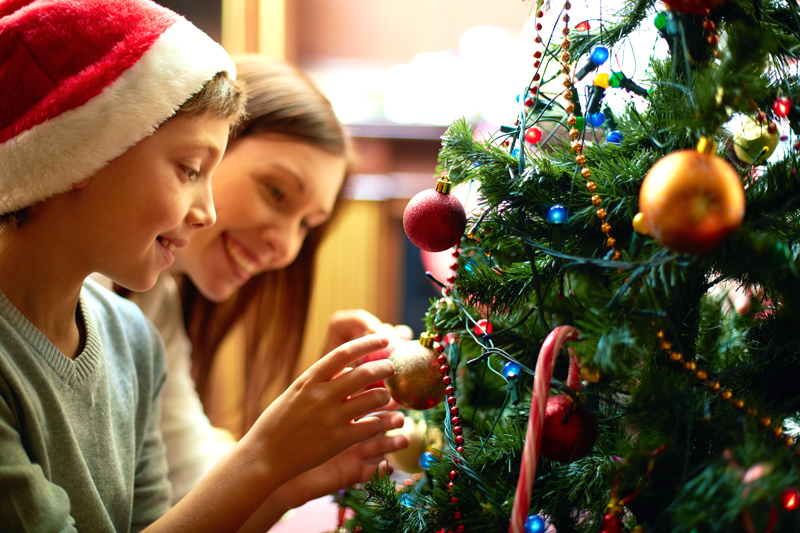Are you ready to make this Christmas a truly inclusive and unforgettable experience for everyone? In this guide, we will explore the ways you can create an autism-friendly Christmas, ensuring that everyone feels included and celebrated during this joyous time of year.
For autistic people, the festive season can be overwhelming and challenging. From sensory sensitivities to difficulties with social interaction, the traditional celebrations may not always cater to everyone’s unique needs.
With the following tips and strategies, you’ll discover how to adapt your Christmas traditions to make them more inclusive and enjoyable for all. From creating a calm and sensory-friendly environment to providing clear visual schedules, we’ll show you how to embrace the spirit of inclusiveness this holiday season.
The Importance of Inclusivity
Inclusivity is not merely about accommodating differences; it’s about embracing them. An inclusive environment helps autistic people feel valued, understood, and supported. During Christmas, a time often filled with joy and connection, ensuring inclusivity can transform the experience from potentially overwhelming to profoundly enriching. By acknowledging and addressing the needs of autistic people, we not only improve their experience but also enrich the celebration for everyone involved. This spirit of inclusiveness can foster understanding and acceptance among family members and friends, paving the way for deeper connections and shared joy.
Creating an autism-friendly Christmas isn’t about changing the core of the holiday; rather, it’s about adapting traditional practices to ensure that they cater to everyone’s needs. By prioritising inclusivity, we can create a festive atmosphere where every individual, regardless of their abilities, can partake in the joy of the season. It is a chance to educate ourselves and others, to foster compassion, and to create lasting memories that honour the diversity of experiences within our communities.
The Challenges Faced by Autistic People During Christmas
The Christmas season is often characterised by vibrant celebrations, family gatherings, and lively interactions. While this can be a joyous time for many, autistic people frequently face challenges that can overshadow the festive spirit. One of the most significant hurdles is sensory overload. The bright lights, loud music, and bustling crowds can become overwhelming, leading to anxiety and discomfort. Autistic people may find themselves struggling to cope with the sensory stimulation, which can detract from the joy of the holiday season.
Moreover, social interactions during Christmas may pose additional difficulties. The expectations surrounding social behaviour, such as initiating conversations, understanding social cues, and responding appropriately to greetings or gifts, can create pressure. For some, the stress of navigating these interactions can lead to withdrawal or meltdowns, making the holiday experience less enjoyable. It is essential for families and friends to recognise these challenges so they are better able to provide support when needed.
Additionally, changes in routine are common during the holiday season, with many families engaging in new traditions or traveling to different locations. For autistic people, this disruption can lead to confusion and distress. The unpredictability of holiday plans can be unsettling, emphasising the importance of clear communication and preparation. By understanding these challenges, we can take proactive steps to create a more comfortable and enjoyable Christmas experience for all involved.
Tips for Creating an Autism-Friendly Christmas Environment
Creating an autism-friendly Christmas environment begins with thoughtful planning and attention to detail. One essential tip is to establish a calm and quiet space within your home where individuals can retreat if they feel overwhelmed. This designated area should be free from sensory stimuli, allowing them to decompress and regain their composure. Consider equipping this space with comforting items such as soft pillows, noise-canceling headphones, and calming visuals, which can help soothe anxiety and provide a sense of security.
Another effective strategy is to provide structure and predictability during the holiday season. Visual schedules can be an invaluable tool, offering clear expectations for the day’s events. This could involve using a calendar or a simple chart that outlines the activities planned for Christmas day, such as gift opening, meals, and outings. Having a visual representation of the day’s timeline can help reduce anxiety and create a sense of control.
In addition to creating a calm environment and providing structure, consider involving autistic people in the planning process. This can empower them and make them feel more included in the celebrations. Ask for their input on decorations, activities, or even menu choices. By engaging them in the decision-making process, you not only validate their preferences but also foster a sense of ownership over the holiday experience. This collaborative approach can enhance their enjoyment and encourage them to participate more actively in the celebrations.
Sensory-Friendly Decorations and Activities
When it comes to decorating for Christmas, it is vital to consider the sensory sensitivities of autistic people. Traditional decorations, such as bright and flashing lights, may be overwhelming for some. To create a sensory-friendly environment, consider using softer, more subdued lighting options. String lights with warm tones or gentle glow decorations can provide a festive atmosphere without causing distress. Additionally, using natural elements like pinecones, branches, and dried fruit can add a rustic charm while minimising sensory overload.
Incorporating interactive and engaging activities can also be a wonderful way to make the holiday season enjoyable for all. Crafting projects using non-toxic, sensory-friendly materials can be a fantastic way to bring everyone together. Activities like creating homemade ornaments or holiday cards can be both calming and creatively stimulating. Consider setting up a designated craft area where individuals can freely express themselves without the pressure of a timed event. This not only fosters artistic expression but also creates an opportunity for bonding among family members.

Communication Strategies for an Inclusive Christmas Celebration
Effective communication is key to ensuring that everyone feels included during Christmas celebrations. One effective strategy is to use clear and concise language when discussing holiday plans. Avoiding idioms or metaphors can reduce confusion and help individuals better understand what to expect. For instance, instead of saying, “Let’s jingle all the way,” you might say, “We will sing Christmas songs together.” This straightforward approach makes communication more accessible and inclusive.
Visual aids can also enhance understanding and engagement. Picture schedules, social stories, or even illustrated invitations can provide clarity and help convey important information. By incorporating visuals, you can create a more supportive environment that addresses diverse communication needs. For example, a visual countdown to Christmas can build anticipation while also providing a sense of structure for individuals who thrive on routine.
Additionally, fostering an atmosphere of patience and understanding during conversations is crucial. Encourage family members and friends to be mindful of each person’s communication style, allowing for extra processing time when needed. Practicing active listening and being responsive to nonverbal cues can also enhance interactions. By adopting these communication strategies, you can create an environment where everyone feels heard and valued, making the Christmas celebration more inclusive and enjoyable for all.
Gift Ideas for Autistic People
Selecting gifts for autistic people requires thoughtful consideration of their unique interests and sensory preferences. When choosing a gift, consider items that promote sensory exploration or provide comfort. For instance, weighted blankets or calming sensory toys can offer a sense of security and relaxation. These gifts not only cater to sensory sensitivities but also contribute to overall well-being, making them thoughtful choices for the holiday season.
Another wonderful gift idea is to focus on hobbies and interests. Many autistic people have specific passions, whether it be art, music, or nature. Tailoring gifts to these interests can foster engagement and joy. For example, art supplies, musical instruments, or nature exploration kits can provide enjoyable and stimulating experiences. By recognising and supporting their interests, you can enhance their holiday experience and create lasting memories.
Lastly, consider experiential gifts that can provide opportunities for memorable experiences. This could range from tickets to a favorite show, passes to a local zoo, or even a subscription to a sensory-friendly activity box. Experiences can often provide more joy than material possessions, allowing individuals to engage in activities that are meaningful to them. By thoughtfully selecting gifts that align with their needs and preferences, you can make this Christmas a truly memorable occasion.
Planning an Inclusive Christmas Party or Gathering
When planning a Christmas party or gathering, it is essential to create an inclusive atmosphere that accommodates the needs of autistic people. Start by considering the venue and setup. Opt for a space that allows for easy movement and offers quiet areas where individuals can retreat if needed. Avoid overly crowded or loud environments, as these can heighten anxiety levels. Decorate with care, ensuring that decorations are visually appealing yet not overwhelming, as too much sensory stimulation can detract from the festive spirit.
Creating a welcoming environment extends beyond the physical space; it also involves fostering a culture of understanding and acceptance among guests. Before the gathering, communicate with attendees about the importance of inclusivity and encourage them to be mindful of the diverse needs of others. This can involve discussing appropriate social behaviours, being patient during conversations, and being sensitive to sensory sensitivities. Establishing these expectations can help create a supportive atmosphere that encourages everyone to connect and enjoy the festivities.
Incorporating inclusive activities during the gathering can enhance engagement and create memorable experiences for all attendees. Consider planning games or crafts that cater to various abilities, allowing individuals to participate at their comfort level. For instance, interactive storytime or group crafts can facilitate connection without putting pressure on anyone to perform. By thoughtfully planning the event with inclusivity in mind, you can create a joyful and memorable Christmas gathering that celebrates diversity and fosters understanding.
Spreading Joy and Acceptance During the Holiday Season
As we embrace the spirit of inclusiveness this Christmas, it is essential to remember that the goal is to create an environment where everyone feels valued and celebrated. The holiday season is a time for connection, joy, and compassion, and making accommodations for autistic people enriches the experience for all involved. By understanding the challenges and taking proactive steps to create an autism-friendly environment, we can ensure that the festive season is enjoyable for everyone.
To learn more about SASI and our range of support services please reach out to us via email [email protected] or call us on 1300 577 305.


